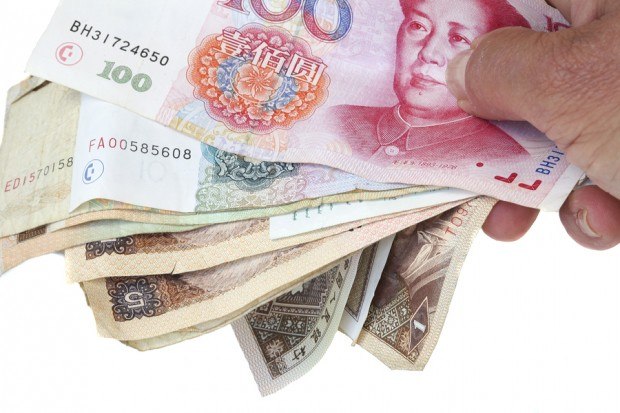Ping An Insurance (Group) Co., the world’s second-largest insurer by market value, is undervalued by as much as 45 percent, a senior executive at the company said.
The $94 billion company, whose businesses span insurance, banking and asset management, is trading 25 percent to 45 percent below what a sum-of-the-parts valuation would imply, according to Chief Insurance Business Officer Lee Yuan Siong. Lee said that while integrated finance companies have fallen out of favor in developed markets, the “conglomerate discount” applied to Ping An has been excessive as China’s booming Internet usage makes it easier for the insurer to acquire new clients and cross-market products.
“The conglomerate discount has been too big and significantly underestimates the real value of Ping An,” Lee said in an interview from Shanghai. “If the market can evaluate us more reasonably and fairly, our market value should increase quite a lot.”
It’s rare for executives at Asian companies to comment publicly on their valuations. Yet Lee’s bullish view on Ping An shares is shared by analysts, who assign it the highest consensus rating among regional insurers valued at $10 billion or more. The average price target of HK$51.41 is 26 percent above Monday’s closing price.
Ping An trails only Warren Buffett’s Berkshire Hathaway Inc. in market capitalization. Its shares have fallen 5.4 percent this year in Hong Kong, compared with a 7.7 percent gain in the benchmark Hang Seng Index.
The shares are trading at a price-to-earnings ratio of 10.4, about one-third of the level of Hong Kong-listed insurer AIA Ltd. and lower than the average price-to-earnings ratio of 16 for Asian insurers. Its ratio of share price to embedded value, a gauge commonly used to value insurers, is 1.06, compared with 1.22 for the group.
HSBC Holdings Plc last month removed a long-standing 20 percent conglomerate discount on Ping An and raised its share-price targets after a two-year reappraisal. HSBC analysts led by Hong Kong-based James Garner updated Ping An to “buy” from “hold” in a Sept. 14 report, and raised the price targets for its Shanghai and Hong Kong-traded shares to 47 yuan and HK$56.
The analysts cited the rapid development of e-finance in China, which has bolstered the case for “one-stop shop” financial services, as well as “tangible benefits” that the Chinese company’s model has generated. That’s different from the scenario in developed markets, where shares of pure-play banks and insurers have outperformed financial conglomerates, who are burdened by added complexity but have failed to deliver the much-touted benefits, according to HSBC.
Ping An reported an 18 percent increase in net income in the first half of this year, compared to a 54 percent slump in Chinese insurers’ combined profits during the period, as growth in premiums and banking revenue helped offset the impact of stock-market declines that have hit rivals. The Shenzhen-based insurer, set up in 1988, has in recent years built Internet platforms including peer-to-peer lender Lufax, health care portal Ping An Doctor, and online property unit Ping An Haofang with an aim of providing services “anywhere, any time” they’re needed, according to Lee.
The Internet has made it easier for Ping An to bundle services and manage customers across multiple business lines, while data collected from its almost 300 million online users can help it provide personalized pricing, extend customer analysis and target marketing, according to HSBC.
The 6.4 million new clients converted from Ping An’s Internet platform users in the first half of this year alone is larger than the 5.7 million entire population of Singapore, where Lee is from. The insurer has seen its financial-services client base expanding by more than 10 million a year in the past three years, about “two Singapores a year,” he said.
“When lots of clients are using our mobile Internet platforms, we believe the average number of products for each will rise significantly,” he said, adding that its high-net-worth clients own an average of 10 Ping An products.
Lufax, which was set up in 2011 and has become among the largest online peer-to-peer lenders by some measures, completed a round of fundraising in January that valued it at $18.5 billion. Ping An Doctor, created less than two years ago to provide health management and mobile medical services, had its first round of fundraising in the first half valuing it at $3 billion.
While declining to predict if valuations of the two units will rise further, Lee said both Lufax and Ping An Doctor have been delivering stronger performances than promised to investors since their latest fundraising. Ping An is also “incubating a few” new Internet platforms, with two being overseen by himself, Lee said without elaborating.
The Internet platforms’ “value in the future will be huge,” he said. Their contribution to the group’s value “has only started.”





















 Five AI Trends Reshaping Insurance in 2026
Five AI Trends Reshaping Insurance in 2026  Why the Middle Market Matters and How Insurers Can Capture It
Why the Middle Market Matters and How Insurers Can Capture It  Slideshow: Carrier Management’s 2025 Top Editor’s Picks (Unlocked)
Slideshow: Carrier Management’s 2025 Top Editor’s Picks (Unlocked)  Surge of Supercharged Hurricanes Prompt Call for Cat 6 Classification
Surge of Supercharged Hurricanes Prompt Call for Cat 6 Classification 






